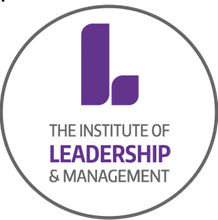If middle managers trust in their junior counterparts and support them to get on with things and deliver, those people will do it.
Sadly, though, middle managers are all too often bunkered down at their desks, hunched over Excel spreadsheets and preoccupied with having an ‘overview’. They’re constantly checking data points while maintaining a distance – and when they do speak to junior managers, it’s largely to micromanage them.
Some junior managers will be goal oriented, with their eyes fixed on achieving outcomes. Others will be problem solvers – living more in the now, focused on immediate challenges and not always aware of the timeframe. Both types of managers must be motivated into productive states. For middle managers, that means you have to talk to them in different ways. And you can’t do that without getting to know them.
While middle managers will never be able to completely escape their Excel files, they have to get out there – either on the office floor or in small-but-frequent videocalls – and build relationships with their juniors.
Be a coach. Ask the difficult questions that Excel won’t answer. Encourage and inspire junior managers to take both action and responsibility.
Small-but-frequent, informal video chats matter all the more if you’re trying to coordinate a team around the world. Mainly because you need to be familiar with how communications work from one country to the next.
In Sweden, where I’m based – and in the UK, too – people tend to be very clear and to the point. In France and Japan, you have to ‘read the air’ more, as people are far more metaphorical in the ways they explain their ideas. Indeed, if you are rigorously clear and concise with contacts in Japan, you could be thought of as childish.
It’s also vital to be aware of your international colleagues’ strengths. If you have a clear picture of those, it will ensure that you assign the right work to the right individuals. But more than that, you will understand how to bring people together to spark creative, productive synergies. If you have all the necessary insights on who people are and what they do best, you will find that one plus one equals something greater than two.
Another important action is to give the people who report to you lots of praise. I’m a big fan of the 80/20 split: positive feedback 80% of the time. Occasionally, you may need to provide some developing feedback – but mostly, it should be in the vein of: “I saw what you did on that project – that’s brilliant. Keep going.” It will make your reports want to stretch even further.
Being a productive middle manager is all about liaising effectively with people above and below so that the organisation can implement directives as quickly as possible. If we look at a standard hierarchy in charge of, say, digging a road through a forest, we have the first-line managers who are working with the people who are doing the actual digging. Then the middle managers who are looking after the logistics. And then the C-suite who are saying, “Uh-oh… we might be in the wrong forest – it’s time for a big pivot.”
Middle managers are key to making major projects – or changes of direction – work.
In the future, though, that traditional hierarchy may not be the model that middle managers work in. If you look at a lot of upcoming firms – particularly in technology – their structures can’t even be described as flat. They’re more like multicellular collections of project hubs.
So, as time goes on, higher-level middle managers may increasingly find that instead of having both a budget and a team, they will only have the budget. Their job will then be to use that budget to buy in relevant team members from a floating pool of talent both inside and outside the firm, in order to create work hubs. And those hubs will be responsible for fulfilling projects devised by the senior management team.
It doesn’t take much insight to see how, in that environment, it will be more important than ever for middle managers to have a facility for closing down distance, getting to know the talent in their orbit and having a clear idea of where those people shine.
There is no better time to prepare for that future than now.




